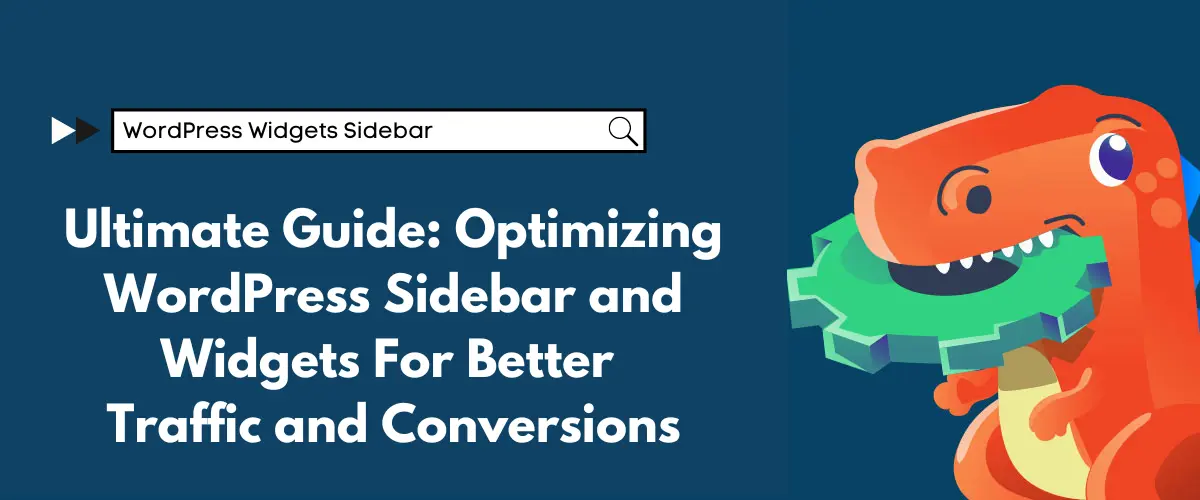Introduction for Optimizing WordPress Sidebar and Widgets
Over the last few years, we have seen the evolution of websites in terms of structures and design or layout, including the changes in the way we use WordPress sidebars. We have followed trends after trends to ensure that our sites get the look, feel, and functionality that conform to our purpose – for instances such as whether to set an image for ourselves or for the products that we sell. In any case, we create our websites with the visitors in mind. We create to express and not to impress, thus we make a grand plan: to devise contents that will clearly put our messages across through carefully composed texts and well-chosen images, and then link with them highly-relevant contents.
The latter part of the plan is crucial to developing a website that not only lets you put your message across but also allows you to reach your supposed end goals – a. get your visitors engaged with your site; b. draw traffic into your site, and c. increase site revenue or product sales. All these goals are intertwined, but getting your visitors engaged with your site leads to all the other two end goals. The question is, “How do we achieve these goals?” The answer is by a myriad of ways, but in this book we are going to focus on one way that is often conveniently neglected: to optimize your sidebars and widgets.
Why do we have to optimize WordPress sidebars?

You might ask how you could possibly neglect optimizing WordPress sidebars and widgets, or in the first place, why you have to optimize them. Alongside these questions are the following concerns:
- WordPress sidebar and widgets appear the same way in all of my pages and blogs.
- I can add as many widgets as I want anywhere in the site, can’t I?
- The more items in the sidebar, the better. Adding up stuff is very simple, isn’t it?
You are almost right, but not quite. Back to our main goal: Get Your Visitors Engaged with Your Site. To achieve this, you don’t want to drive them away, and these are some of the reasons why they leave your site, and worse, never come back:
- There’s too much going on in your site — too crowded, too many ads, too many links, and too many widgets.
- You thoughtlessly lead them through other sites by providing them links to those external pages, when they are supposed to stay within your site.
How do popular websites use sidebars?
We have thoroughly looked into over 70 popular websites* and found out that majority of them use sidebars and widgets. We have observed the trend in WordPress sidebar layouts and contents to help you decide on yours.
Some websites opt for no sidebars or limit them to only several pages. Also, sidebar contents vary from one page to another. This is depending on how they go in tune with the main contents. Some of these no-sidebar sites choose plug-ins that allow for content to be accessible anywhere on a page as users move around it. These contents are instantly reachable through widgets that stick around and float over the page. We are introducing some plugins that allow you to do the same to your sites.
*Sources:
- https://www.forbes.com/sites/julesschroeder/2016/11/29/25-marketing-influencers-to-watch-in-2017/#65ab5547343d
- https://www.wpbeginner.com/showcase/40-most-notable-big-name-brands-that-are-using-wordpress/
- https://www.forbes.com/sites/johnrampton/2016/01/21/20-content-marketing-blogs-you-need-to-bookmark/#e5cdda220b8c

